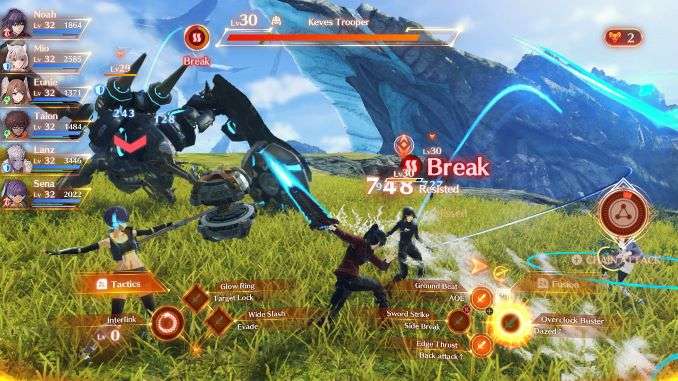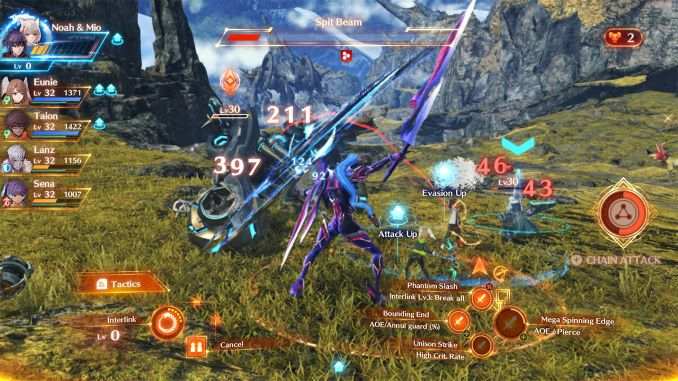Xenoblade Chronicles 3 Is Another Excellent Installment in a Fantastic Trilogy

Xenoblade Chronicles 3 marks the first time where Tetsuya Takahashi and his team at Monolith Soft have truly seen a long-term vision through to its completion. Xenogears, which Takahashi and many developers who would go on to form Monolith created while still at Squaresoft in the mid-to-late-’90s, famously ran out of time in its development. This is how the second disc ended up more story than gameplay, and the end credits referred to the game by a surprise, George Lucasian full title that has never been acted upon: Xenogears Episode V. Similarly, the Xenosaga trilogy that Monolith would develop while a subsidiary of Namco was actually supposed to be six games long, but was sliced in half after deadlines in the development of Episode I forced significant cuts and made it clear there was simply too much ambition for the development cycles and storage solutions of the day.
The Xenoblade trilogy, though, seems to have struck the proper balance between what’s achievable and Monolith’s grander designs. Each of the three titles is a standalone game that doesn’t require playing the others in order to be understood and appreciated. At the same time, though, all of these games are connected: it took much longer to realize that connection in Xenoblade Chronicles 2 than in its sequel, which depicts iconic imagery from the first two entries in both its box and promotional art, but that catgirl has been out of the bag for some time now. Takahashi described Xenoblade Chronicles 3 as the “culmination” of the series—bringing to a close the themes of the previous two games, continued in this title, allowing for Monolith to look forward to what’s next for the Japanese role-playing franchise Nintendo isn’t about to put a stop to now that they finally have one with something to say.
This reworking of scope has actually allowed for Monolith to focus even more on building intricate systems, while ensuring that they only look convoluted and complicated from the outside. A screenshot of a late-game battle in Xenoblade Chronicles 3 is inscrutable, unknowable—explaining what everything on screen means and how you react to and with it would take longer than a review of the game as a whole. Monolith, though, has figured out how to hold your hand without making it feel patronizing, bringing you along, one system at a time, until the deployment of all of that accumulated knowledge feels as natural as Mario jumping on that first Goomba’s head. It all happens much more quickly than in its predecessor as well—Xenoblade Chronicles 3 also ties its advancements in battle systems to the narrative, but all far swifter than in Xenoblade Chronicles 2—and has been designed so that a larger group of people can figure it all out at their own pace, too.
Monolith has made this Xenoblade more approachable through difficulty options, the ability to autobattle, and, most importantly, freedom as to whether you want to approach this game as a sicko who loves tweaking characters and skills and stats in a menu for concerningly unbroken stretches of time, or as someone who simply wants to press a button so that the game will do all of that for you, and you can get back to exploring. The process of crafting stat-enhancing gems—and the number of gems that are even craftable—has been greatly reduced from the absurdity of Xenoblade Chronicles: Definitive Edition. There are no weapons or armor to purchase or find: the characters live in a world where all of that is generated for them depending on which class they are, by the same military technology that enforces every other aspect of their lives. Which also means Xenoblade Chronicles 3 removed the worst part of games that have a Job system: having to grind for heaps of gold in order to buy new job-specific gear that you’re just going to have to replace once you max out a job, anyway. Sorry, Bravely Default fans, but that shit sucks out loud.
Monolith is well aware of their own habits at this point in a way they didn’t used to be, and that self-awareness caused them to streamline the elements that could be streamlined, which in turn makes Xenoblade Chronicles 3 the most accessible of the three titles despite its nigh-excessive scope. That streamlining allowed them to go harder on the number of systems in place, so while things might seem overly simple at the beginning, when you’re simply letting auto attacks do their thing and occasionally using a skill once its meter fills, that all changes once you get out of the earliest of introductions.

Xenoblade Chronicles 3 introduces the different class types—attacker, defender, and healer—by forcing you to play as one of each in succession for narrative reasons, and then introduces the sub-classes within those larger parent classes. Characters from each side of the war actually see their battle skills charge up in different ways, with one being exclusively time-based, the other filling each time you successfully land an auto attack. Knowing the difference matters not just for which of the game’s six lead characters you’re controlling at a given moment—you can swap between them at will, so long as they’re conscious—but also because, eventually, each of those characters will have some of each in their arsenal. You begin with four equipped battle skills—arts—and four eventually becomes seven. You can either use those additional three whenever they load, or wait until corresponding arts—such as the ones mapped to the X button and Up on the directional pad—are both ready to go, and then perform a Fusion Art, which uses the attack of the X art while also delivering the effect of the other. The use of Fusion Arts, of course, feeds its own meter, which is tied into two other systems you’ll probably want to take advantage of.
Decisions like that, plus filling a Chain Attack meter that pauses enemy movements and attacks and allows you to absolutely lay into them uninterrupted as a party, the ability to transform paired party members into the mech-like Ouroboros with their own arts and skills, and the fact you have to work as part of a well-constructed party in the role your current class dictates, means you will always be thinking and doing something, be it in the moment or a few steps ahead. And that there are presets for how you want to set your party to act—focus on Smash Combos that will do loads of extra damage to foes, or Burst Combos that will nullify their buffs? Attack at will against anyone, or focus on the same enemy as the character you’re controlling? Use any arts immediately, or aim for Fusion first?—means you also need to be considering what the larger party as a whole is doing, and not just your own actions. Again, though, you’re brought along slowly enough that you grasp all of these individual bits before moving on to the next, and they all work together in harmony by the time you’ve got the full slate in front of you.
So, Xenoblade Chronicles 3 feels great to battle in once those limiters are removed—the best of the series in that regard, even—but how does the rest of it play? Exploration will consume much of your time, as the world is absolutely massive. There are icons on your map and minimap you’ll want to discover, yes, but you aren’t inundated with these markers like in certain sensory-destroying open-world games of the modern era, and much of the decisions about where to go are left up to you and your roaming eyes. It’s not Breath of the Wild-level freedom, and the starkness of that map is basically unmatched by anything unless you shut off all of the icons in this one, but Monolith is responsible for both landscapes, which explains part of how Xenoblade Chronicles 3, while not replicating the full openness of Breath of the Wild, still manages to create that, “Hey, I wonder what’s over there” vibe that begins with you seeing what’s on the other side of a hill, and ends a dozen hours later with you finding yourself as many levels ahead of where the story expects you to be without having progressed it at all.
There’s some good news there, too. If you want to battle more and explore less, then do that. If you’d rather explore and earn additional experience and levels that way, hunting down rare and unique monsters while mostly avoiding normal foes with normal rewards, you can do that, too. If you want to partake of both, challenging yourself with the optional missions and exploration while cruising through the required missions and battles, then by all means, you can. You’ll get the experience you need one way or the other, and if you want to play on the tougher difficulties, you’ll likely need plenty from both paths. JRPGs tend to be somewhat strict and linear, and there is some of that in here, but where freedoms can be granted in Xenoblade Chronicles 3, they are.
It’s worth it to play the more optional missions of Xenoblade Chronicles 3, though, even if you don’t have to. They often have just as much narrative and emotional weight as the main game, furthering not just your own characters’ beliefs and backstories and personalities, but those of NPCs and your swappable seventh party members, the Heroes of Xenoblade Chronicles 3, as well. These are what flesh out the world, its philosophies, and the people within it. The world of Aionios is full of people just like those who make up your party: they are all soldiers, child soldiers, really, living the exact same life, with the exact same experiences, and, as you free yourself from that particular yolk and free these other from it, as well, the same difficulties of a post-war life also emerge. Sure, sometimes you have some “hey, get X of Y for me” missions, but most of those are relegated to an automated system within your menu. Usually, these optional missions are about pushing you to discover more pieces of the world and the people and problems within it.
-

-

-

-

-

-

-

-

-

-

-

-

-

-

-

-

-

-

-

-

-

-

-

-

-

-

-

-

-

-

-

-

-

-

-

-

-

-

-

-









































